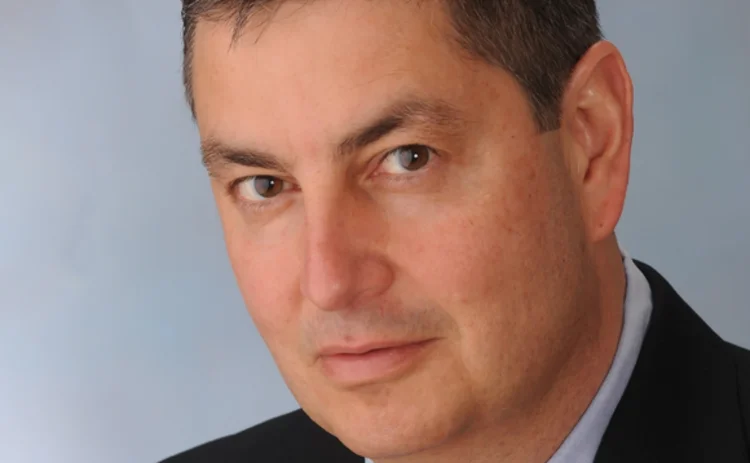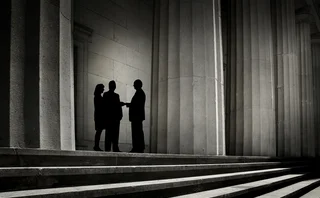'Broken Markets' Have Learned Little Since 2010 Flash Crash

This Sunday will mark the second anniversary of the Flash Crash that wreaked havoc on the markets on May 6, 2010. As we all trade in this extremely low-volume trading environment, it is fitting that we recap where we stand today.
Listening to NYSE Euronext's first quarter conference call yesterday, we shook our heads in dismay as management described a trading environment in which volumes fell to a four-and-a-half-year low—the lowest levels since Regulation NMS was implemented in late 2007, in fact.
NYSE CEO Duncan Niederauer explained that the 44 percent profit decline was due largely to a 25 percent drop in revenues from transactions from a year earlier. The culprit, according to Niederauer, is an unfriendly environment for high-frequency trading firms. From his point of view, regulators and folks in the media hyped the HFT bogeyman too much, creating uncertainty, causing an HFT migration into other asset classes and geographies.
In our opinion, Niederauer doesn't get it. He is mistaking the symptoms for the underlying problem. HFT volumes are down because investor volumes are down. Investor volumes are down because traditional retail and institutional buyers and sellers of stock have been steadily waking up to the dangers of drinking at the increasingly dangerous "stock market watering hole."
Like the animals on the Serengeti, who for years were accustomed to sipping long and heartily at their favorite spot, retail and institutional investors now see what's beneath the surface. And they are deciding that the drink they crave is just not worth the risk.
More than $250 billion in long-term equity funds has retreated from the markets since May 6, 2010—despite a slow but steady improvement in the economy and a Dow Jones Industrial Average that has doubled since 2009 lows. It isn't that these investors don't have confidence in the economy. They don't have confidence in our markets.
It isn't hard to blame them. They have witnessed a radical transformation of the best capital allocation market system in the world, into one where:
● Thirteen stock exchanges cater to hyper traders who game the system, chasing exchange rebates, and leveraging speed for the purpose of a nanosecond scalping dance.
● More than 40 dark pools together trade more than one-third of all shares.
● Conflicts of interest abound as exchanges own stakes in dark pools, and HFT firms own stakes in exchanges.
● Brokerage firm internalization of trades feeds the HFT financial modeling of investor orders.
● Exchange data feeds act as a veritable digital video recorder (DVR) of investor orders and behavior, the recording of which is then sold to HFTs.
● Rogue exchange-traded products break down, trap unsophisticated investors, and only enrich the issuers, exchanges, and HFT firms that make markets in them.
● HFT firms in the last decade have achieved wondrous profitability—double-digit Sharpe ratios—while investors at best have clawed back to even.
● More than $1 billion in customer-segregated monies goes missing from MF Global, with not a single prosecution, nor a hope of redress.
As they witness all of the above, traditional retail and institutional investors see that our regulators must be having a challenging time acting as effective police in the marketplace:
● Flash orders, which give HFTs a quick peak at retail and institutional orders, are still alive and well, under many different names, despite a proposed banning of them in 2009.
● Dark pool regulation, also proposed years back, has not materialized.
● Internalizing brokerage/HFT firms, which clearly played a huge role in the market meltdown on May 6—perhaps as well in the financial crisis in late 2008 and 2009—still practice the same way, with additional help from dark pools and exchanges that have all embraced "liquidity provider" programs.
● And finally, payment for order flow (PFOF) is alive and well on numerous levels throughout the system—from retail, to maker/taker exchange pricing, to free dark pool executions.
Investors know that the markets are broken. And they desperately want them fixed.
Our outrage over the transformation of the best capital markets in the world to this conflicted and fragmented web of chaos led us to write our book, Broken Markets: How High-Frequency Trading and Predatory Practices on Wall Street are Destroying Investor Confidence and Your Portfolio, which is being published by Financial Times Press.
When the book comes out June 3, it will find no shortage of critics from within our industry. However, we needed to write it. For years we have spoken about all of these issues in trade magazines and the financial media, and at industry conferences and panels, as well as with our regulators.
We wrote Broken Markets so that Main Street could understand what happened to our markets, to inspire change, so we can once again have the best capital markets in the world.
So, happy anniversary to everybody who made the Flash Crash happen. We hope you are enjoying yourselves—because we, and millions and millions of other retail and institutional investors around the world, are not.
Only users who have a paid subscription or are part of a corporate subscription are able to print or copy content.
To access these options, along with all other subscription benefits, please contact info@waterstechnology.com or view our subscription options here: http://subscriptions.waterstechnology.com/subscribe
You are currently unable to print this content. Please contact info@waterstechnology.com to find out more.
You are currently unable to copy this content. Please contact info@waterstechnology.com to find out more.
Copyright Infopro Digital Limited. All rights reserved.
As outlined in our terms and conditions, https://www.infopro-digital.com/terms-and-conditions/subscriptions/ (point 2.4), printing is limited to a single copy.
If you would like to purchase additional rights please email info@waterstechnology.com
Copyright Infopro Digital Limited. All rights reserved.
You may share this content using our article tools. As outlined in our terms and conditions, https://www.infopro-digital.com/terms-and-conditions/subscriptions/ (clause 2.4), an Authorised User may only make one copy of the materials for their own personal use. You must also comply with the restrictions in clause 2.5.
If you would like to purchase additional rights please email info@waterstechnology.com
More on Trading Tech
ICE eyes year-end launch for Treasury clearing service
Third entrant expects Q2 comment period for new access models that address ‘done-away’ accounting hurdle
MarketAxess, S&P partnership aims for greater transparency in fixed income
CP+, MarketAxess’s AI-powered pricing engine, will receive an influx of new datasets, while S&P Global Market Intelligence integrates the tool into its suite of bond-pricing solutions.
Trading Technologies looks to ‘Multi-X’ amid vendor consolidation
The vendor’s new CEO details TT’s approach to multi-asset trading, the next generation of traders, and modern architecture.
Waters Wavelength Ep. 311: Blue Ocean’s Brian Hyndman
Brian Hyndman, CEO and president at Blue Ocean Technologies, joins to discuss overnight trading.
WatersTechnology latest edition
Check out our latest edition, plus more than 12 years of our best content.
A new data analytics studio born from a large asset manager hits the market
Amundi Asset Management’s tech arm is commercializing a tool that has 500 users at the buy-side firm.
How exactly does a private-share trading platform work?
As companies stay private for longer, new trading platforms are looking to cash in by helping investors cash out.
Accelerated clearing and settlement, private markets, the future of LSEG’s AIM market, and more
The Waters Cooler: Fitch touts AWS AI for developer productivity, Nasdaq expands tech deal with South American exchanges, National Australia Bank enlists TransFicc, and more in this week’s news roundup.








